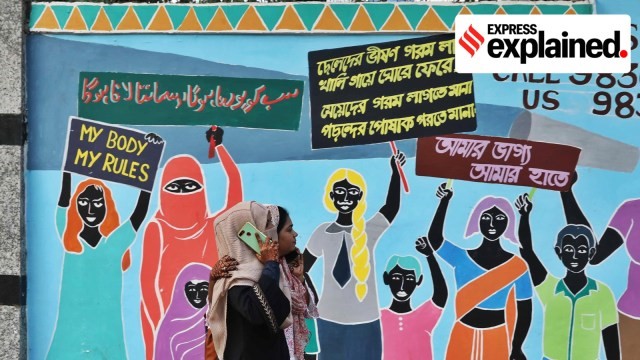India Philanthropy Report 2025

- 05 Mar 2025
In News:
The India Philanthropy Report 2025, a joint publication by Bain & Company and Dasra, presents an insightful overview of the evolving landscape of philanthropic giving in India. With private philanthropic funding projected to grow annually by 10–12% over the next five years, the report underlines the increasing role of family philanthropy and corporate social responsibility (CSR) in complementing public sector expenditure on social development.
Growth of Social Sector Funding
India's total social sector funding reached approximately ?25 lakh crore ($300 billion) in FY24, accounting for 8.3% of the GDP. Public funding continues to dominate, constituting 95% of the total with allocations towards flagship welfare schemes like MGNREGS and the Pradhan Mantri Awas Yojana. Private philanthropy, however, is steadily gaining ground, contributing ?1.3 lakh crore ($16 billion) in FY24, and is expected to grow significantly by FY29.
Despite this growth, a considerable funding gap persists—estimated at ?14 lakh crore in FY24 and projected to widen to ?16 lakh crore by FY29. Bridging this deficit is critical for meeting India's Sustainable Development Goals (SDGs) and the vision of Viksit Bharat@2047.
Rise of Family Philanthropy
Family philanthropy has emerged as a key driver of private social funding, accounting for around 40% of total private contributions. It spans diverse sectors including education, healthcare, gender equity, diversity and inclusion (GEDI), climate action, and social justice. Notably, 55% of family philanthropic initiatives are women-led, and around one-third involve next-generation leadership, indicating a shift towards more inclusive and innovative giving.
Structured philanthropy is becoming more prominent, with nearly 65% of family-run initiatives now managed by professional teams. The report projects that by building robust advisory infrastructure and tapping into family offices, India can unlock an additional ?50,000–55,000 crore ($6–$7 billion) in family philanthropy over the next five years.
Corporate Social Responsibility: Compliance and Concentration
Corporate Social Responsibility (CSR) spending, mandated under the Companies Act, is another critical pillar. CSR expenditure is growing at a projected 10–12% per annum, driven by increased compliance and strategic integration into corporate goals. The number of CSR-compliant firms rose from 12,000 in FY22 to around 15,000 in FY23.
Family-owned businesses contribute nearly 65%–70% of total private CSR spending, with major conglomerates like Tata, Adani, Birla, and Ambani alone accounting for ?800–1,000 crore each annually. However, the sector remains top-heavy: just 2% of family-owned firms are responsible for over half of all CSR contributions.
HNIs, UHNIs, and the Philanthropic Disparity
Despite the promising trends, Indian High-Net-Worth Individuals (HNIs) and Ultra-High-Net-Worth Individuals (UHNIs) still contribute a relatively small fraction of their wealth towards philanthropy. Indian UHNIs donate only 0.1%–0.15% of their wealth, compared to 1.2%–2.5% in the US, 0.5%–1.8% in the UK, and 0.5%–1.4% in China.
In FY24, average annual philanthropic contributions from UHNIs (net worth ?1,000 crore and above) hovered around ?5 crore, while HNIs (?200–1,000 crore) contributed ?0.4–?5 crore. This indicates a large untapped potential that can significantly bolster India's development financing.
Institutionalization and Diaspora Potential
The number of family offices—dedicated institutions managing family wealth and philanthropy—has increased from 45 in 2018 to 300 in 2024, with projections to cross 500 by 2029. Institutions like Dasra, Sattva, and Bridgespan have been instrumental in supporting structured and high-impact philanthropy.
India’s diaspora, growing from 18 million in 2019 to 35 million in 2024, also presents a significant but underutilized opportunity. While diaspora philanthropy is estimated at $130 billion currently, better awareness, simplified compliance norms, and digital platforms could enhance its impact and push the potential closer to $200 billion.
Challenges and the Way Forward
Despite the optimistic outlook, several challenges hinder the full realization of philanthropic potential in India:
- Persistent funding gaps in critical sectors like healthcare, education, and climate change.
- Regulatory and compliance barriers, especially affecting foreign and diaspora contributions.
- Fragmented infrastructure, with limited advisory services and high transaction costs.
- Short-term funding models, with only 23% of family philanthropies combining grants with direct program implementation, undermining sustainable impact.
To address these, the report suggests:
- Promoting long-term funding mechanisms, including multi-year grants.
- Professionalizing philanthropy through structured advisory services and capacity building.
- Unlocking diaspora contributions via simplified regulations and dedicated philanthropic platforms.
- Enhancing collaboration across stakeholders to amplify social impact and innovation.
Conclusion
The India Philanthropy Report 2025 underscores the transformative potential of private giving, particularly through family philanthropy and CSR. While public funding remains the bedrock of India’s social development agenda, strengthening the philanthropic ecosystem—by leveraging wealth, institutions, and global networks—is vital to achieving equitable growth and meeting national development goals.
